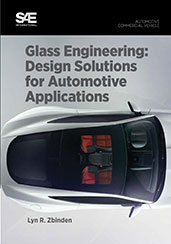Technical Paper
Dynamic Analysis of Snow Falling from Roof of Cab on Cowl Tray with Equation of State Defined for Snow
2010-10-05
2010-01-1914
This paper talks about using an approach to simulate snow mass falling from roof of cab on the cowl tray of a commercial truck and predicting the durability life of the cowl tray based on this loading. It has always been a challenge for analysts to model the behavior of snow/slurry in dynamic simulations especially where the area of concern is structure and not the fluid. The conventional approach followed in most industries would be either to model snow as soft rubber or to divert from the conventional Lagrangian algorithm for mesh movement towards Eulerian method (or ALE algorithm). Although modeling snow as soft rubber captures the basic physics of the problem, it is not able to correctly simulate the fluid structure interaction behavior and the pressure wave movement inside the snow/slurry when it comes in contact with the structure.

